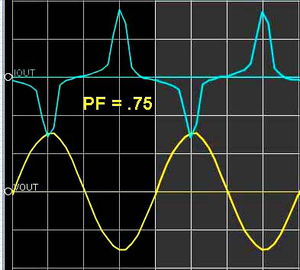What do they do differently??
When does it matter which one you use?
What do they do differently??
When does it matter which one you use?
When a UPS does PFC, it brings apparant and real power in unison on grid and supply side. The grid side does not matter for most home users as the analogue meters do not track apparant power.
When you have a smart meter, then it may be a good idea to have one.
The PFC on the supply side does not make any sense to me. The UPS just has to supply the current at the voltage the PSU draws it, so beefier components = better.
Pure sine wave means the H-bridge generating the voltage is pulsed in way that it approximates a real sine wave (like the grid supplies).
but if load has PFC (like active PSU… should it matter?
The important part is pure sine wave. The better the sine wave the PSU gets, the better (= lower) the DC output ripple.
When a load has a bad power factor it doesn’t pull current uniformly throughout the AC waveform. Usually most of the current on these loads are the peaks of the AC waveform. This puts more strain on cables because you have current spikes.
For this reason some power companies charge for the amount of power used at the peak current draw. This means you could be paying for 2kw/h when you only actually used 1.5kw/h. This is usually only for business’s and not for residential.
A UPS with PFC will try to even out the load so that current stays uniform. Good computer PSU’s already have PFC built in so then having a UPS with PFC shouldn’t matter then.
This is an example of a bad power factor:

thanks forum members